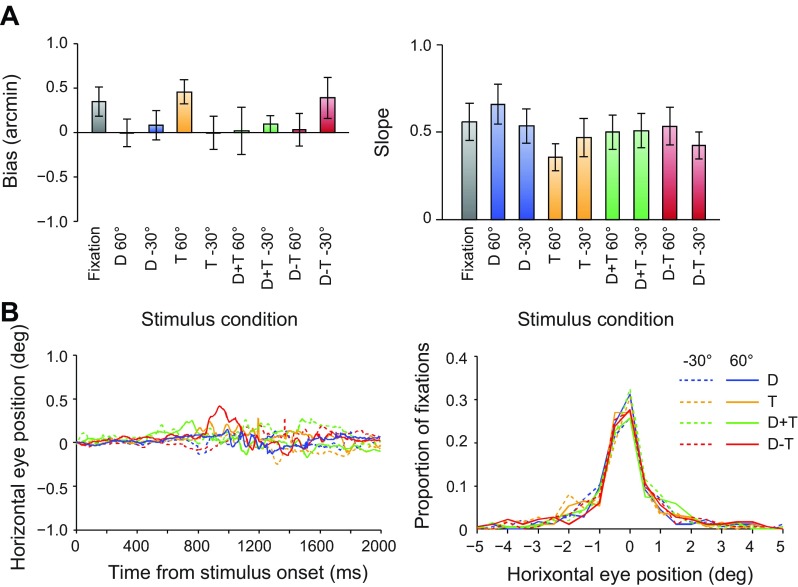Fig. 7.
Subjective and objective eye movement analysis. A: participants performed a Vernier task during scanning, in which they reported the perceived direction of horizontal offset of a small target relative to the central nonius line of the fixation marker. For each participant we fitted a cumulative Gaussian to the proportion of “right” responses as a function of the horizontal offsets of the targets, to obtain bias and slope measurements. Bias (deviation from the desired vergence position) in participants' judgments was close to zero. Repeated-measures ANOVA revealed no significant effect of condition [F(3,33) = 1.15, P = 0.34], slant angle [F(1,11) < 1, P = 0.95], or interaction [F(3,33) = 2.32, P = 0.09]. Similarly, we found no differences in the slope of the psychometric functions by condition [F(3,33) < 1, P = 0.41], slant [F(1,11) < 1, P = 0.87], or interaction [F(3,33) = 2.81, P = 0.07]. Performance on the Vernier task therefore suggests that participants were able to maintain stable eye vergence (Popple et al. 1998). Error bars show SE between subjects (n = 12). B: we recorded horizontal eye movements for a subset of participants (n = 3) while they lay in the scanner bore, using a monocular eye tracker (Cambridge Research Systems) with a stated accuracy of <0.25° visual angle. No significant differences were observed across conditions for eye position [F(3,6) = 1.39, P = 0.34], number of saccades [F(3,6) = 2.26, P = 0.18], or saccade amplitude [F(3,6) = 1.38, P = 0.34]. Traces of mean eye position aligned to the start of each trial showed only small deviations from fixation, with no systematic differences between conditions.

